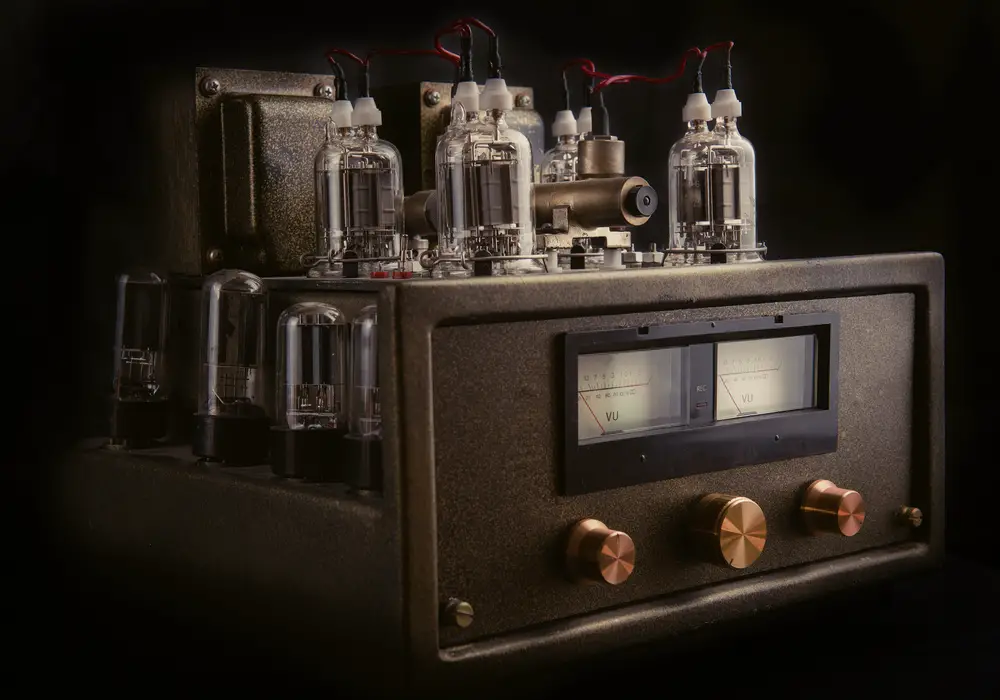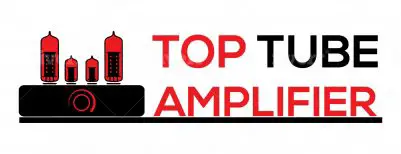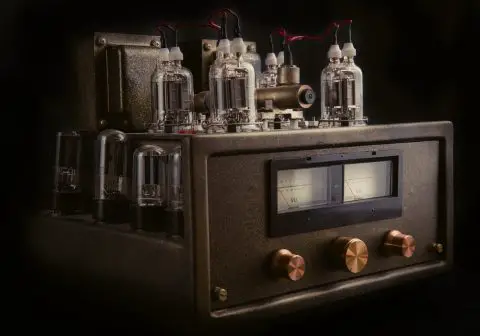Audio amplifiers are available in various different classes that vary in terms of configuration and electrical components, with Class A amplifiers being the most common because of their notable simplicity. Class A amplifiers are known to provide maximum amplitude and high linearity.
But what makes this class different from other amplifier classes such as B, AB, C, and D? Also, what are the use cases they’re most optimal for? This article attempts to shed light on amplifier classes, with Class A amplifiers as its main focal point. By the end of this article, you should be able to determine whether or not a Class A amplifier is suitable for your audio needs.

What Is an Amplifier Class?
Typically denoted by one or two letters, amplifier classes such as Class A, AB, C, and D help describe the topology of a power amplifier, from its performance to its characteristics. It’s not a grading system like you might have guessed. Just because a power amp is graded A doesn’t mean it’s inherently higher in quality than another amplifier that’s given a different grade.
Amplifier classification is important to take into consideration before making a buying decision because each class gives a different response when current passes through it. There are plenty of amp classes available on the market, but the most popular ones are Class A, B, AB, C, and D. Modern amps that use switching topologies and PWM technology belong to other classes.
You should also keep in mind that some amp classes are just enhanced variants of traditional classes. For example, Class G amplifiers are pretty much Class B or Class AB amps but with some modifications.
How are amplifiers classified, exactly? Well, it all boils down to their input cycle proportion when an electric current passes through. If you don’t know what the input cycle is, it’s a derivative angle of the sinusoidal wave conduction of an amplifier’s input. This angle is given much consideration because it’s directly proportional to an amp’s on-time throughout a full cycle.
For example, if you have an amplifier that’s always on throughout an entire cycle, its conduction angle will be 360 degrees, which means that the amplifier used the complete input signal. This also means that the active element consistently conducted through the whole time period of the input’s sinusoidal wave conduction
What Are the Different Amplifier Classes?
Now that you have a basic understanding of how power amplifiers are classified, let’s shed light on some of the most notable traditional amplifier classes so that you fully grasp the differences between them
Class A
Class A power amplifiers are models with a 360-degree conduction angle, meaning they use the entire input signal and stay active the entire cycle. These amplifiers are distinguished by having high linearity and high gain. Because Class A amplifiers are always on, they do an excellent job of delivering high frequency as well as exemplary feedback loop stability.
In terms of construction, Class A are some of the easiest amplifiers to build because they utilize very minimal components. Does that mean Class A amps are perfect? Not at all. Each class of amplifier has its positives and negatives. In the case of Class A amps, the primary disadvantage is that they promote considerably high power loss since they’re continuously conducting.
High power loss equates to increased heat, meaning that Class A amplifiers require higher heat sink space to prevent damage. The efficiency of Class A amplifiers is somewhere between 25% and 30% while using the usual configuration, so it’s relatively poor compared to other classes. However, you can increase the efficiency to 50% using an inductively coupled configuration.
Moreover, since Class A amplifiers flaunt high linearity, they’re bound to introduce some level of distortion and noise. If you want to minimize distortion and noise, you have to be extra critical of the amp’s bias construction. Simply put, Class A amps are optimal for low-signal amplification purposes.
Class B
Instead of using a single active device like Class A amps, Class B amps utilize two devices to deliver combined current drive and 180 degrees of the conduction cycle. Each drive is active only throughout half of the conduction cycle, which helps improve efficiency significantly. To be more specific, the efficiency of Class B amplifiers is around 60%, theoretically speaking.
The increase of efficiency in Class B amplifiers helps minimize heat dissipation, which means you don’t need high heat sink space. The primary disadvantage of using a Class B amplifier is the crossover distortion. This crossover is a result of each active device being responsible for providing one-half of the sinusoidal waves which are eventually joined across the output.
While distortion can be minimized in the case of a Class A amplifier, it’s hard to minimize with a Class B amplifier because when one of the devices is active, the other device stays completely inactive. Class B amplifiers are ideal in most scenarios, except the ones that rely on precision audio amplification.
Class AB
Class AB amps are designed specifically to overcome the crossover distortion found in Class B amps. As the name implies, these models rely on the intermediate conduction angle of both A and B amplifiers. This class basically combines the best of both A and B amps. It features the same configuration as Class B amps in the sense that it utilizes two active elements.
Each element is responsible for conducting throughout half of each cycle, but they’re biased in such a way that they’re not completely inactive during the crossover moment. Instead of being completely inactive after completing their half of the cycle, each element conducts a very small amount of input. This helps reduce the crossover during the dead zone significantly.
With such a configuration, Class AB amplifiers have to be flawless, right? Wrong. The linearity of AB amplifiers is pretty mediocre, and so their efficiency is reduced significantly. It’s still more than the efficiency of Class A amps, but less than that of Class B. Some AB amps have small value resistors that help stabilize the quiescent current in order to minimize distortion.
Class C
Class C is another traditional class of amplifiers that’s quite different from all other amp classes in terms of operation. In actuality, it flaunts two different modes of operating: tuned and untuned.
It flaunts much greater efficiency than the above-mentioned classes, reaching a maximum of 80%. This high extent of efficiency can be reached in radio frequency amplification. For use cases other than radio frequency amplification, expect an efficiency of 60%-70%.
As far as the conduction angle, it’s less than 180 degrees. When operating untuned, a Class C amplifier excludes its tuner from the amplification process. However, this mode is accompanied by a great deal of distortion that might deter some people.
In the event of the circuit getting exposed to a tuned load, on the other hand, the output bias level is clamped with the average output voltage. This is why it’s called “clamper operation.” The signal in this mode is not cluttered with distortion because it retains its proper shape.
What Class of Amplifier Is Best?
Determining which class is best depends entirely on your needs. If you’re looking for the highest sound fidelity, Class A amplifiers are the best, but they’re the least efficient. Class B amplifiers are a step up from Class A amps in terms of efficiency, but their main disadvantage is distortion.
Class AB strikes a superb balance between efficiency and quality, they’re a bit costly, though. If you seek the highest possible efficiency, we advise opting for a Class D amplifier. However, high fidelity isn’t one of this class’ strong selling points.
Class A vs Class D
We left out Class D amplifiers from our discussion of the different amplifier classes because we wanted to have a head to head between them and Class A amps. Like we already established, Class A amplifiers are the ultimate models when it comes to sound fidelity, whereas Class D amps are the best in terms of efficiency. Their efficiency can reach up to 90% in some cases!
Class D amplifiers are quite unique compared to other classes in the sense that their onboard circuitry is capable of producing super high-frequency pulses that can exceed 100 kHz. Not only that, but each pulse is modified by the input signal. Generally, the wider the pulse, the louder it signal should be. This is a technology that goes by Pulse Width Modulation or PWM for short.
When these pulses run through the output transistors (MOSFETs), an incredibly high output is produced. The transistors are either operating on full throttle or with no power whatsoever since they’re receiving DC pulses. This helps ensure maximum efficiency of up to 90% like we just mentioned.
A low-pass filter helps smoothen the output after amplification to ensure a continuous analog power output. The filter also helps remove the interferences resulting from the high-frequency DC pulses. This, unfortunately, generates a notable deal of distortion, which is why audiophiles aren’t quite fond of using Class D amplifiers and prefer to use Class A or Class AB amps.
Class D amps are preferred in audio amplification purposes and professional PA systems because fidelity isn’t that big of a deal in such situations. Also, if you champion compactness, you’re going to love using Class D amps because they’re small and lightweight. Furthermore, they run much cooler than other amp classes while running on the same amount of power.
Class A Amplifier Efficiency Calculation
In order to determine the efficiency of a power amplifier, you must know the amp’s input power and output power. To determine the input power of your amplifier, use the formula P=V*I, where V is the voltage of the amplifier and I is the current running through it. You’ll need a multimeter or an oscilloscope in order to measure these values.
Thereafter, you need to determine the output power using the formula P=V2/R, where V2 is the output voltage and R is the resistance. Since you already have the current, you can determine the resistance by dividing the voltage over the current (R=V/I).
Lastly, to find the efficiency of your amp use the formula ηmax = (Pout/ Pin)*100, where ηmax is the efficiency, Pout is the output power, and Pin is the input power. Simple, right?
Class A Amplifier Pros & Cons
There’s no such thing as an all-around perfect audio amplifier. Each has its own advantages and disadvantages. The following paragraphs highlight the pros and cons of Class A amps.
Advantages:
- High Fidelity – Class A amplifiers are capable of producing outputs that are exactly similar to the input signal, which guarantees high sound fidelity.
- Simple Construction – Class A amps utilize a single active element and their overall construction is quite simple and easy to figure out.
- Great High-Frequency Response – Class A amps house one active device that’s always on, meaning that it doesn’t require time to turn on its active device. This helps ensure a superb high-frequency response.
- No Crossover Distortion – Class A amps rely on one active device to carry out the entire input signal cycle, so there’s zero crossover distortion.
Disadvantages:
- Bulky Construction – Even though their design isn’t complicated, Class A amps tend to have a bulky construction due to their need for a large heat sink and power supply. This also entails a higher cost of operation.
- Least Efficiency – Class A amplifiers have an efficiency range of 25%-30%, which isn’t much compared to other classes.
Final Thoughts
Hopefully, the information shared in this article has given you some solid insight into the world of amplifier classes and has helped you determine which class is suitable for your requirements. If you have any questions, please feel free to let us know.

